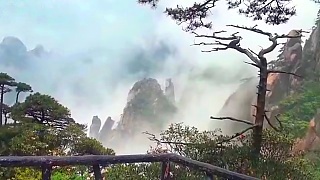With Char 787 ...
[video v=pHdilci_CI4]With Nick in China ...
Plus more videos ...
Live more ...
With Char 787 ...
[video v=pHdilci_CI4]With Nick in China ...
Plus more videos ...
How to find your mojo / be in the zone, by not trying too hard, letting go and living in the now.
Don't get stuck in the past, and future thoughts. Be alive, now.
That's Wu Wei - 'without effort' : without preconception, or desire.
With Einzelgänger ...
[video v=VpcQVjSVqOM]HuBei province.
With ShangGuan JieWen 上官杰文 ...
[video v=OQbvLUh2_3I]With Jason Gregory.
Wu wei and the Dao (Tao) ...
[video v=IuDY8m72tgk]Bonus film - with Alan Watts ...
Plus more videos ...
10,000 pearls of wisdom; when follow The Way, it is one pearl.
The truths found in the Tao Te Ching are universal and timeless. A book of wisdom written by a sage named Lao-Tzu / Lao Zi, circa 500 BC, China.
Read by the late Wayne Dyer ...
[video v=73_Voet2fnc]The audio as well as the translation of the version you hear is from a book called Living The Wisdom of The Tao: Change Your Thoughts - Change Your Life by Wayne Dyer. His book includes a detailed commentary on each of the verses ...
Plus more videos ...
Alan Watts talks about Zen Buddhism - why we should stop chasing our tail.
Wu Wei - action without force ...
[video v=ZzaUGhhnlQ8]The Middle Way - the path that cannot be followed, and The Fall (anxiety) ...
Plus more videos ...
The Tao Te Ching in older PinYin.
The 'Book Of The Way', by LaoZi (Lao Tsu / Lao Tse) is the essence of Daoism (Taoism).
An audio book with introduction; don't miss it ...
[video v=ef_ANdUhl4Q]Bonus film - The Taoist Way - a talk by Alan Watts ...
Plus more videos ...
Near LuoYang, provincial capital of HeNan, central China.
There is a LaoZi Cultural Park near the foot of the mountain and a cable car is available to reach the top.
[video v=qdUJDxgw-6s] Plus more videos ...
The three key philosophies of China - video
Confucianism, Buddhism and Taoism. And how they complement each other. Stephen Prothero is a Professor of Religion at Boston University. These excellent expositions are well worth a listen for all who wish to understand the Chinese civilisation, including China today.
Butterfly Dream - the wisdom of Zhuang Zi 庄子
Somewhere on ZhongNan Mountain ... "Once, ZhuangZi dreamt he was a butterfly, a butterfly flitting and fluttering around, happy with himself and doing as he pleased. He didn't know he was ZhuangZi. Suddenly he woke up and there he was, solid and unmistakable ZhuangZi. But he didn't know if he was ZhuangZi who had dreamt he was a butterfly, or a butterfly dreaming he was ZhuangZi." This hints at many questions regarding the philosophy of mind, language, epistemology (knowledge and belief), and the nature of time. The wisdom of Zhuang Zi (Chuang Tzu / Chuang Tse); 369 BC - 286 BC, a contemporary of Mencius (a disciple of Confucius). Zhuang Zi had a significant impact on Chinese Buddhism - particularly the type that is best known by its Japanese name: Zen Buddhism. Zhuang Zi is, however, essentially a key figure in Taoism, following Lao Zi (Lao Tse). A good read is 'The Way of Zen' by Alan Watts.
The beautiful WuDang Mountains 武当山, home of Taoism
A fascinating documentary by CCTV English ...
These mountains lie just south of ShiYan in HuBei province. Famous for its stunning scenery and Taoist monastries.
The Taoist temples at WuDang Mountain 武当山
Near ShiYan city in north-west HuBei province, central China. A UNESCO World Heritage Site.
SanQing Mountain 三清山, JiangXi province
SanQingShan is a renowned Taoist sacred site located 25 miles (40 km) north of YuShan County in JiangXi Province. With outstanding natural scenery, plants and wildlife, the park is a UNESCO World Heritage Site that in all covers 230 square kilometers. SanQing means the “Three Pure Ones” in Chinese as Mount SanQing is composed of three main summits: YuJing, YuShui, and YuHua, representing the Taoist trinity. YuJing (rising 1820 meters above sea level) is the highest. 三峰峻拔、如三清列坐其巅 SanQing Mountain in Jiangxi Province, although not very well-known to many people today, was regarded as a sacred place for Taoists in the Tang Dynasty period (618-907), when Taoism was at its most popular. With beautiful clouds, mist and strange-shaped pine trees, Sanqing Mountain is a fairyland far from the hustle and bustle of city life. The mountain is shrouded in mist for about 200 days each year. On misty days, dense fog envelops the mountain completely and makes you think you are wandering in the clouds. Once in a while, wind blows away the mist, and a stiff, imposing peak suddenly appears right in front of you. http://www.sanqing.com/english/
Buddhism, Taoism, and Confucianism in China - video
An excellent overview of the Three Teachings ...